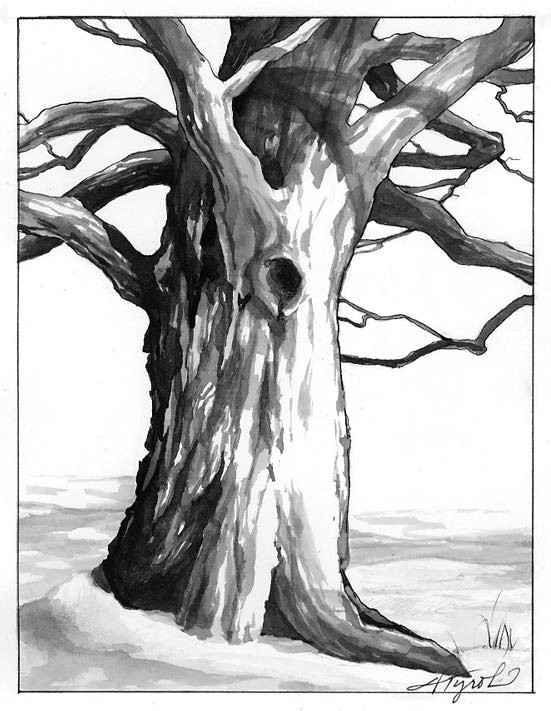
Unlike the Ents in Tolkien’s Lord of the Rings, real trees can’t walk away from danger or fight their own battles. When climate becomes inhospitable, forests can only shift ranges over long periods of time. This isn’t a problem when natural climate change occurs slowly. At the end of the recent post-glacial period, it took 4,300 years for the ice sheet to melt back from Middletown, Connecticut, to St. Johnsbury, Vermont — averaging 245 feet a year. Forest communities in front of the glacier gradually migrated northward in its wake.
Starting about 9,000 years ago and stretching for the next 4,000 to 5,000 years, the average temperature in the New England area became nearly 4°F warmer than it is today, and the climate was similar to modern-day Virginia. Hemlock and white pine grew 1,300 feet higher up the mountain slopes. Evidence now shows that the engines of the industrial age are taking today’s climate forward, into the past. U.S. Climatological Network Data reveals that the mean annual temperature has increased by 3.8°F since 1835, but 70% of this rise in temperature has occurred since 1970.
Barry Rock, Professor of Natural Resources at the University of New Hampshire in Durham predicts that, based on two climate models in a New England regional climate assessment study, “Within the next 100 years, Boston could have a climate similar to either Richmond, Virginia, or Atlanta, Georgia.” These computer models project that the average regional temperature will rise from between 6°F and 10°F over the next century.
If the models prove accurate, Rock says that, “In 100 years, New England’s cooler regions will no longer promote the growth of sugar maples, which are well adapted to the region’s current climate. This climate will support species that now grow to the south and in lower elevations, especially oaks and southern pines. On average, trees can only move their range from 10 to 25 kilometers over a 100-year period, and the current rate of climate change will not allow enough time for trees to ‘migrate’ northward in a smooth transition.”
Ultimately, under this scenario, the optimal range for sugar maples in New England could retreat up the high mountain slopes and to northern Maine. (Sugar maple’s current range extends as far south as Virginia and Tennessee, though only in the higher mountains.) Of the five computer models created by the U.S. Forest Service to predict the geographic shift in the ranges of forest species, only one foretells that global warming will cause sugar maples to disappear completely from parts of New England. Even if the climate warms considerably, our forests will still support the growth of some sugar maples, especially in higher terrains.
Although the range of sugar maples changes slowly, the flow of sap in a sugarbush is dynamic and depends on fine temperature variations that occur daily throughout late winter and early spring. Sap flows best when nighttime temperatures drop into the mid-20’s and when daytime highs reach around 38-40°F.
From here the effects of climate change are harder to predict. If the daily cycling between freeze and thaw occurs less frequently, sugaring will suffer, as it will if the season is shortened by several weeks. But if sugaring as we now know it is simply shifted earlier into the year, the effect could be less pronounced. Making predictions about sugaring season has always been an uncertain but popular pastime, even before the dawn of climate change.
The maple sugar industry can compensate somewhat for the uncertainties of the shifting climate. According to Dr. Timothy Perkins, Director of the University of Vermont’s Proctor Maple Research Center, “The best equipment in the sugar house isn’t going to make you any more money. It’s how you manage the sugarbush that counts.” Producers need to tap their trees earlier, before the sap starts to flow, so they can gather the best quality sap of the season. Old tubing must be replaced with new, which is made of superior material and is more efficient. Getting rid of leaks in the system will help, as well as using a vacuum system for collecting sap. Collectively, these steps can help mitigate the problem.
No matter what steps are taken, the wheels have been set in motion. The question is: How far down the road will sugar maples have to travel before we put the brakes on climate change?


Discussion *